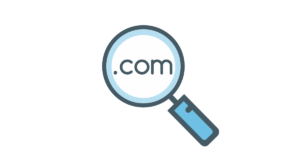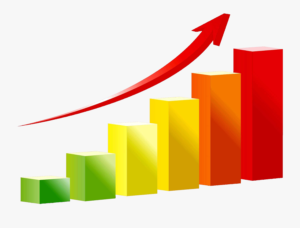Depending on your perspective, the premise might seem absurd. Everyone knows digital is the future, right? Maybe. But maybe the future is still a ways out. To use an automotive analogy- maybe the immediate future is a more powerful and energy efficient motor…but not necessarily a flying car. Leading with technology in professional services has tradeoffs. Sure, there are efficiencies at scale, but is “digital first” what all customers really want- or only a certain kind of customer? It’s a fair question, and while customers often enjoy researching their options without human interaction, they also seem to value the right expertise at various stages in the process. This is more true of shopping for insurance than it is for finding a pair of socks on Amazon.
Make no mistake. If you need a shot in the arm, digital marketing can help you generate prospects consistently at a fairly predictable cost- whether or not you intend to sell online. There is no disputing that digital prospecting, digital servicing, and maybe digital selling, is here to stay. That doesn’t mean every agent needs to be a virtual agency. In fact, some agents are doing just fine without consumer facing quote and underwriting automation. They are still reaching their target audience- and still writing policies. The conversation about digital is too often presented as a binary choice between offline sellers and online sellers- as if there are only two kinds of customer journeys. Nothing could be further from the truth.
Digital marketing for insurance agencies isn’t synonymous with direct sales. The sales funnel hasn’t flattened or disappeared. It’s the same game as it’s always been and diversification is still the strongest play. Digital media, and more specifically social media, is relevant…but it also seems to come with its share of baggage- namely an increasing trust gap. Digital mediums can increase your reach…but they don’t implicitly add value to your brand. The message is still up to you. In fact, Google’s educational material for marketers encourages “mixed media campaign” strategies with ideas for leveraging tracking to see how traditional ads (TV, radio, etc) drive engagement and feed your funnel- in addition to digital campaigns. It doesn’t make sense to focus on one medium to the exclusion of others. The funnel is still the same: Visibility (brand awareness) → Engagement (brand credibility) → Conversion (sales).
The “old” marketing options haven’t gone away. You can still use mailers, outbound calls, networking, and traditional ads to build awareness and credibility into your brand and stuff your pipeline with prospects. This is less about digital pros and cons, and more about resisting the temptation to associate digital with a particular sales mechanism. In fact, a couple of the most obvious and least expensive uses for the newest technologies include building your brand and measuring your entire funnel- even if you never sell an online policy.
If you require policyholders to come to your office, shake your hand, and sign their apps in blue ink or make a blood covenant, you can still use technology to get them there and to know how they found you. You can also know exactly how many of them called or came by- even if your staff isn’t comprised of meticulous record keepers. This is true of brick and mortar stores, and it’s also true of insurance agencies. How is that possible? Let’s think about this for a second.
For better or worse, an increasing number of people spend a lot of time looking at the screen in their palm. That device knows more about you and where you go than we will ever want to admit. It is an advertiser’s dream…which is what made Google (aka Alphabet) one of the most valuable companies in the world. Google isn’t just a search engine. By being the first to implement standardized tracking scripts and reporting tools at scale, they effectively became the entity who mediates the overwhelming majority of internet traffic. Of course, the tracking is now connected to the GPS in our mobile devices, so they know what we shop for and where. Even in non-Google devices and browsers they see almost everything. You can resent them for it and say that people hate mobile ads and they hate being tracked. It’s probably true, but I don’t ever remember being glued to TV and radio ads either…and they still work to generate awareness. I don’t like that Google knew that I wanted that accessory for my Jeep….but that one looks like a great deal, actually. Thanks…I guess?!
The fact is, when it comes to ad dollars, Google ads are a fraction of the cost per view (ie. impression)- and they are much more targeted. In TV or Radio, there is a broad demographic range and an expected viewership. In Google, you can dial that in exponentially. Specific age ranges, genders, interests, recent search histories, etc. With the right expertise, you can “build-a-bear” your way to the right target audience. Then…you can know exactly how many times your ad was actually seen…and if you do get engagement, you can learn what triggered it and what action different audiences are likely to take next. Again, this doesn’t mean you stop your tv/radio/billboard. This is just another tool in your belt to get to a newer, potentially larger audience, and we haven’t said a word about selling online. In fact, people will use technology to find businesses that they prefer to visit in person- evidenced by the trend in “near me” searches. They can find you online and show up at your doorstep. You don’t have to have a digital business to have a digital ad anymore than you have to sell policies over the radio to run radio ads.
As powerful as Google ads are, the bigger impact of digital might not even be the expanded reach. Did you know you can weave tracking technology into customer journeys that meander between online and offline interactions? Consider this anecdote: you run a new TV ad and you use call tracking or a dedicated page on your site to identify traffic directly from the ad. Next, you see how many people pulled up your phone # on their mobile device or got directions to your office in their phone’s GPS over the next couple of weeks after the ad run to see if the awareness is driving increased engagement compared to the prior period.
With the right tracking and measurement tools, the ability to organize and measure your funnel from top to bottom has never been more accessible. Maybe your VEC (Visibility | Engagement | Conversion) ratio is 100,000 impressions to 10 engagements to 1 conversion (100 | 10 | 1). That might indicate that your messaging and sales funnel needs some work…or you need to improve your target audience. Maybe your VEC is 1,000 | 100 | 25. That would indicate your funnel is highly optimized and simply putting more resources into increased exposure to similar audiences will pour gasoline on your fire!
Let me leave you with one final analogy to drive home the point. A similar innovation would have been the telephone. Not everyone used it to sell policies…and some still don’t prefer to sell by phone. However, many people use it to telemarket, and even more people use it as a way to communicate with prospects and customers.
The same is true of digital. Digital isn’t primarily about selling- although some will certainly do that. The question isn’t whether digital can be useful. The question is what uses fit your agency’s personality…and, maybe more importantly, what uses will be most effective with your agency’s target audience. None of us need every digital tool, but virtually all of us should be using various digital tools and information to improve parts of what we do.
What are your goals? What is your audience? Are there digital tools that can help you meet or measure those goals? The answers to those questions will keep your focus oriented toward your core objectives without getting distracted by every digital shiny object that promises to triple your sales overnight.








